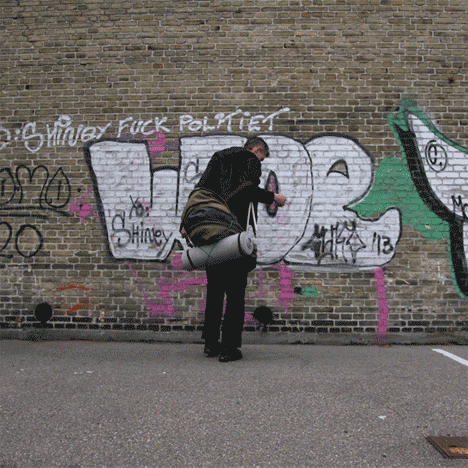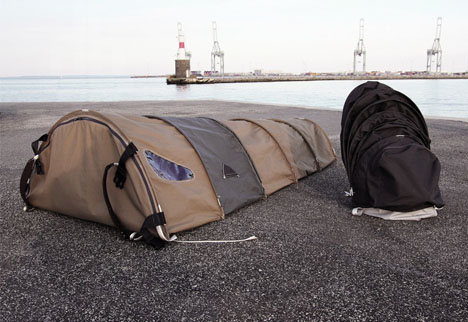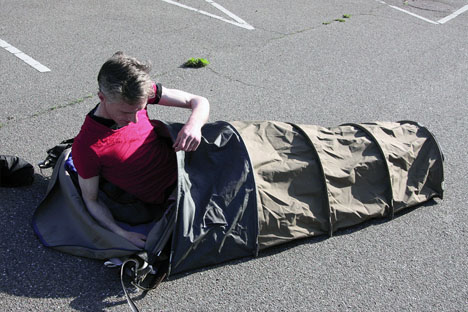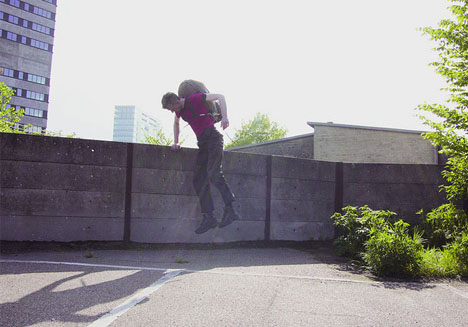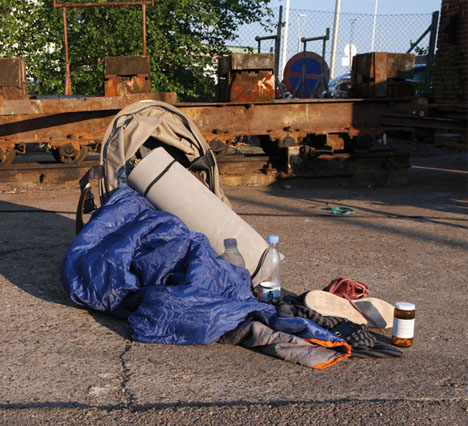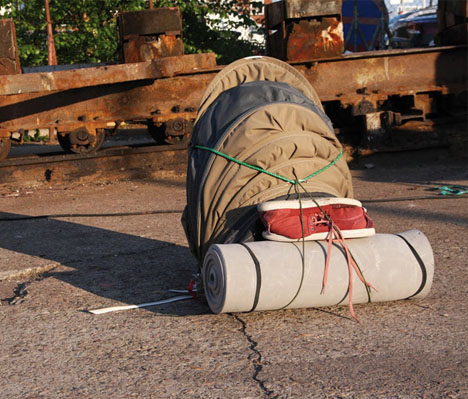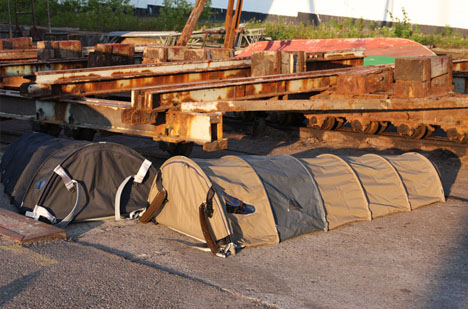Amid the various conceptual designs for addressing large-scale homelessness, this working prototype stands out as refreshingly realistic, practical and applicable to the everyday needs of those sleeping on the streets: mobility, storage and shelter.
Ragnhild Lübbert Terpling, who studied both design and journalism, created the pack both for homeless populations and ordinary campers, the latter purchasers subsidizing the former group that is in greater need.
On its functionality: “the hybrid backpack expands into a fully retractable tent-like structure, providing extensive shelter for both those in need or for encampment purposes. Once compressed, the bag supplies enough space for storing essential living supplies; blankets, shoes, and other toiletries.”
Additional items, like spare shoes or a sleeping roll, can be lashed to the exterior of the pack, while more essential and personal possessions are tucked into compartments that are less easily accessed or removed for additional security.
While it by no means ‘solves’ the problem of homelessness, this product adds a layer of comfort and durability absent from typical de facto shelters like cardboard covers or sleeping bags. In short: it is more short-term patch than long-term problem solver, but at least it is a place to start.
